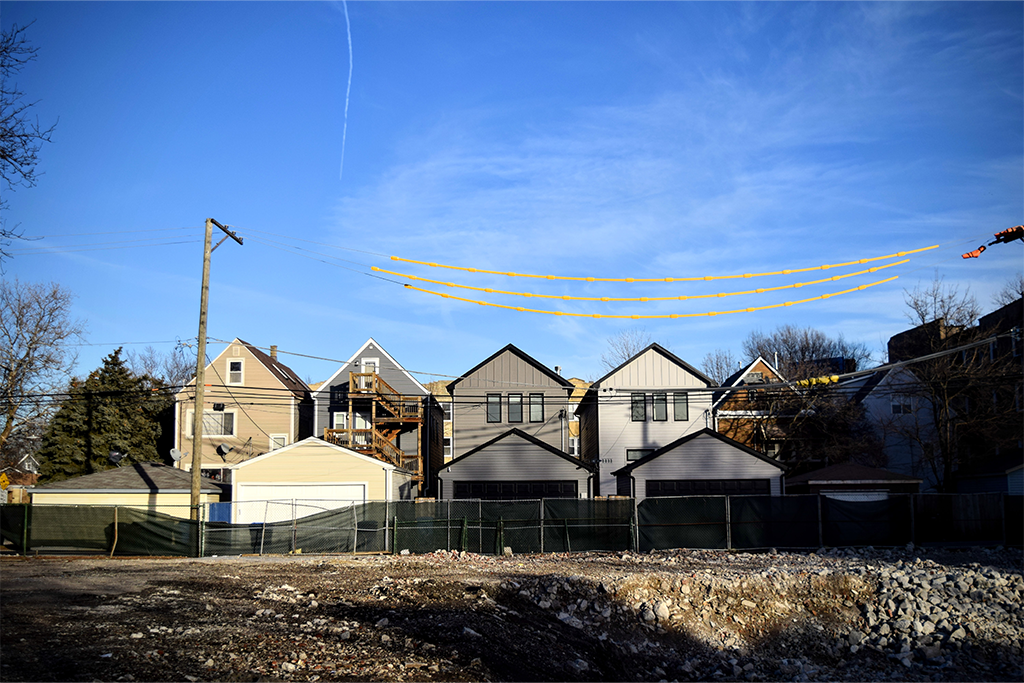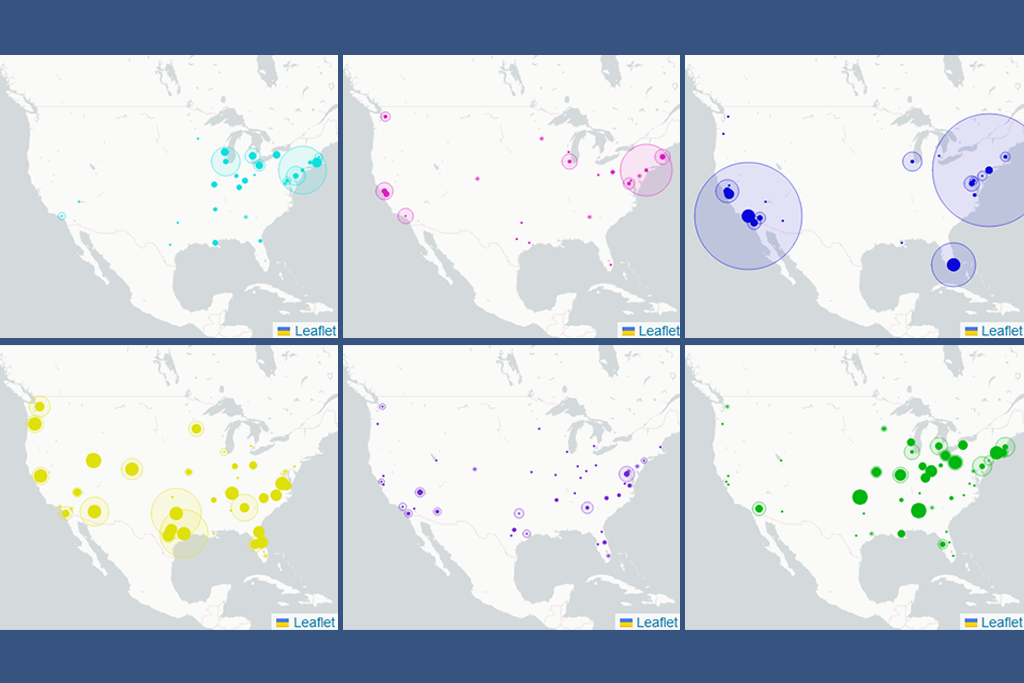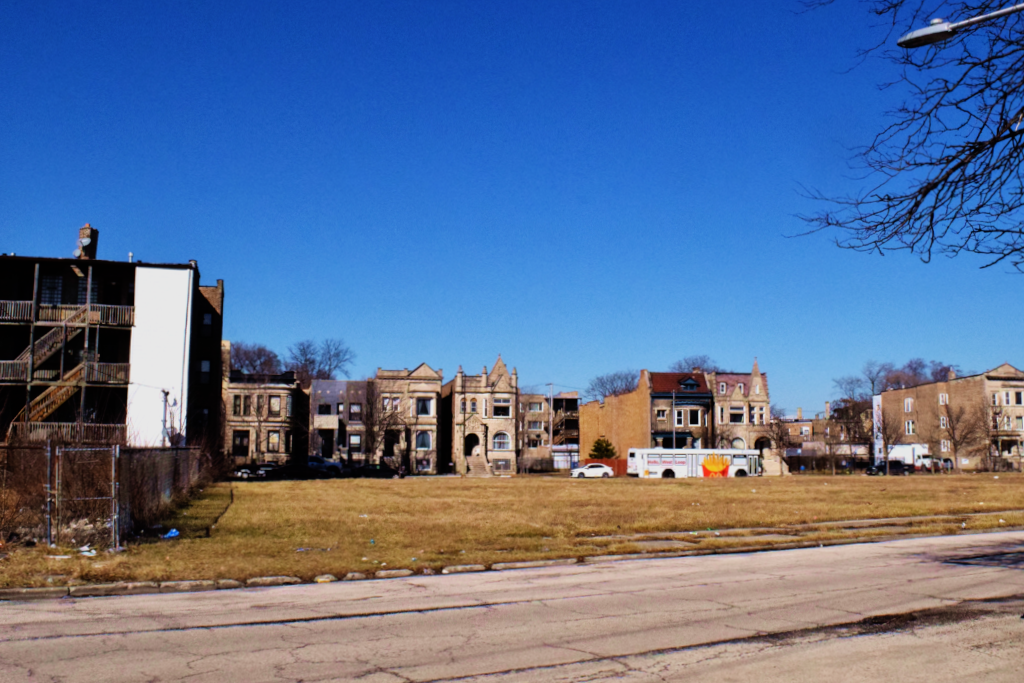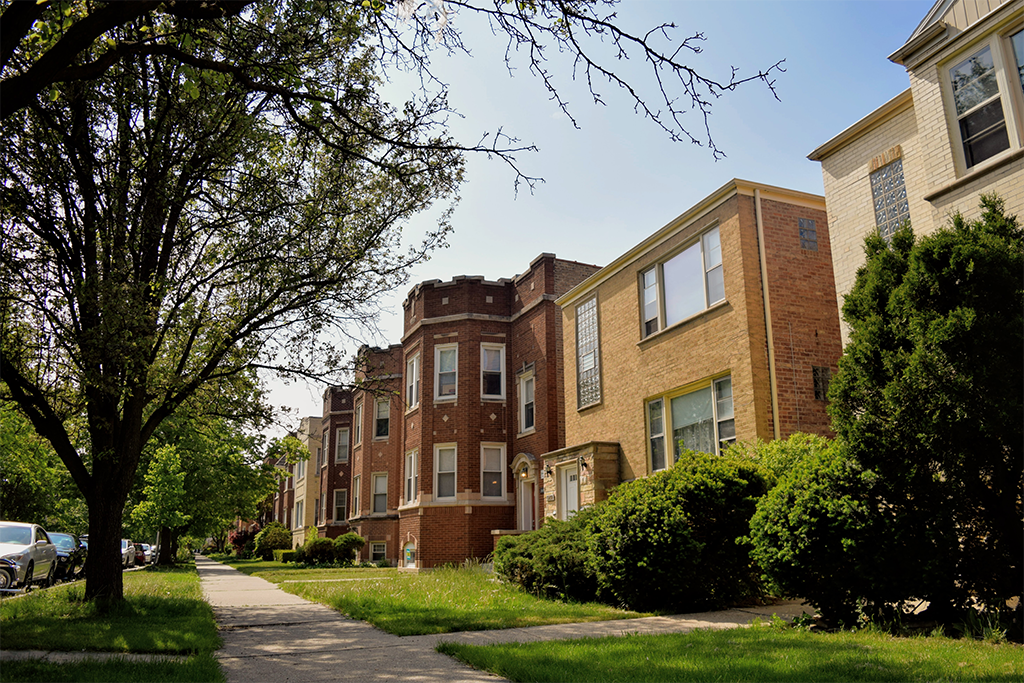The City of Chicago commissioned the Institute for Housing Studies to develop data to guide conversations around developing Chicago’s 2019-2023 Five-Year Housing Plan. These data informed a series of three Advisory Group meetings held in June and July 2018 where stakeholders were convened to discuss key housing challenges facing the city and recommend potential solutions.
These data are now available as a public resource to inform ongoing discussions of Chicago's housing needs on the website Overview of Chicago's Housing Market. The site highlights data on 1) Socioeconomic Factors Affecting Demand for Housing in Chicago, 2) Affordable Rental Housing and Displacement Pressure, and 3) Home Ownership and Investment in Chicago Neighborhoods.
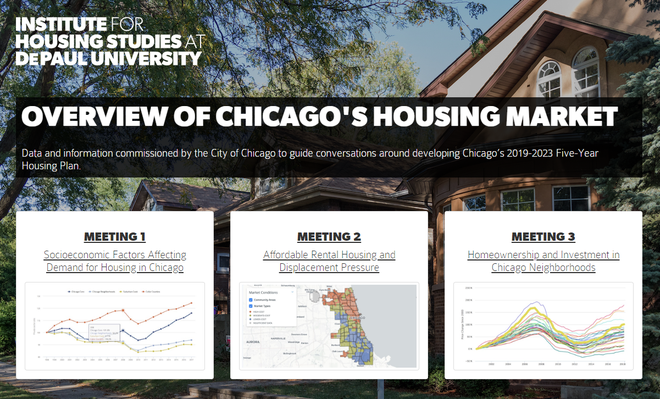 New site allows users to explore data used to inform conversations around developing Chicago next Five-Year Housing Plan
New site allows users to explore data used to inform conversations around developing Chicago next Five-Year Housing Plan
Key resources on the site include data and maps highlighting:
- The underlying dynamics of recent population loss in the City of Chicago in the context of the five other largest American cities and peer Midwestern cities.
- Job growth in Chicago’s downtown core and the loss of jobs in Chicago neighborhoods.
- The variation in current conditions and recent socioeconomic trends in neighborhoods with high, moderate, and lower housing costs.
- Changing rental demand, the supply of rental housing, and how these dynamics are affecting access to affordable rental housing for Chicago’s lowest income households.
- How Chicago’s rental housing supply has changed between 2010 and 2016 for neighborhoods with high, moderate, and lower housing costs.
- Displacement pressure in a set of Chicago neighborhood with 1) significant levels of populations vulnerable to displacement (i.e. renters, lower-income households, cost-burdened households, etc) and 2) rising housing costs that indicate potential market shifts that may impact future housing affordability.
- Concentrated patterns of foreclosure activity in Chicago neighborhoods highlighting how the legacy of the foreclosure crisis still presents a challenge to investment and recovery in some areas.
- The variation in a set of indicators examining levels of investment in the Chicago housing market and across neighborhoods with high, moderate, and lower housing costs.
- Opportunities and potential headwinds to increasing homeownership and housing investment in Chicago neighborhoods with high, moderate, and lower housing costs.
For more information on the project, or for custom technical assistance inquiries utilizing these data, contact IHS.


